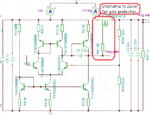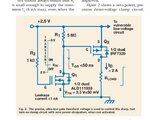d123
Advanced Member level 5
Hi,
Working on a theoretical circuit and I was wondering if there are any viable and reliable alternatives to using a Zener diode to protect the MOSFET gate from over voltages.
It crossed my mind that an op amp clamp may be feasible but perhaps not up to the job/powerful enough.
No problems with PCB size or suchlike, willing to give anything discrete-based and suitable a go, just seeking input about alternatives to Zener diodes.
Any suggestions?
Example schematic to show what is being referred to:

Thanks.
Working on a theoretical circuit and I was wondering if there are any viable and reliable alternatives to using a Zener diode to protect the MOSFET gate from over voltages.
It crossed my mind that an op amp clamp may be feasible but perhaps not up to the job/powerful enough.
No problems with PCB size or suchlike, willing to give anything discrete-based and suitable a go, just seeking input about alternatives to Zener diodes.
Any suggestions?
Example schematic to show what is being referred to:

Thanks.






